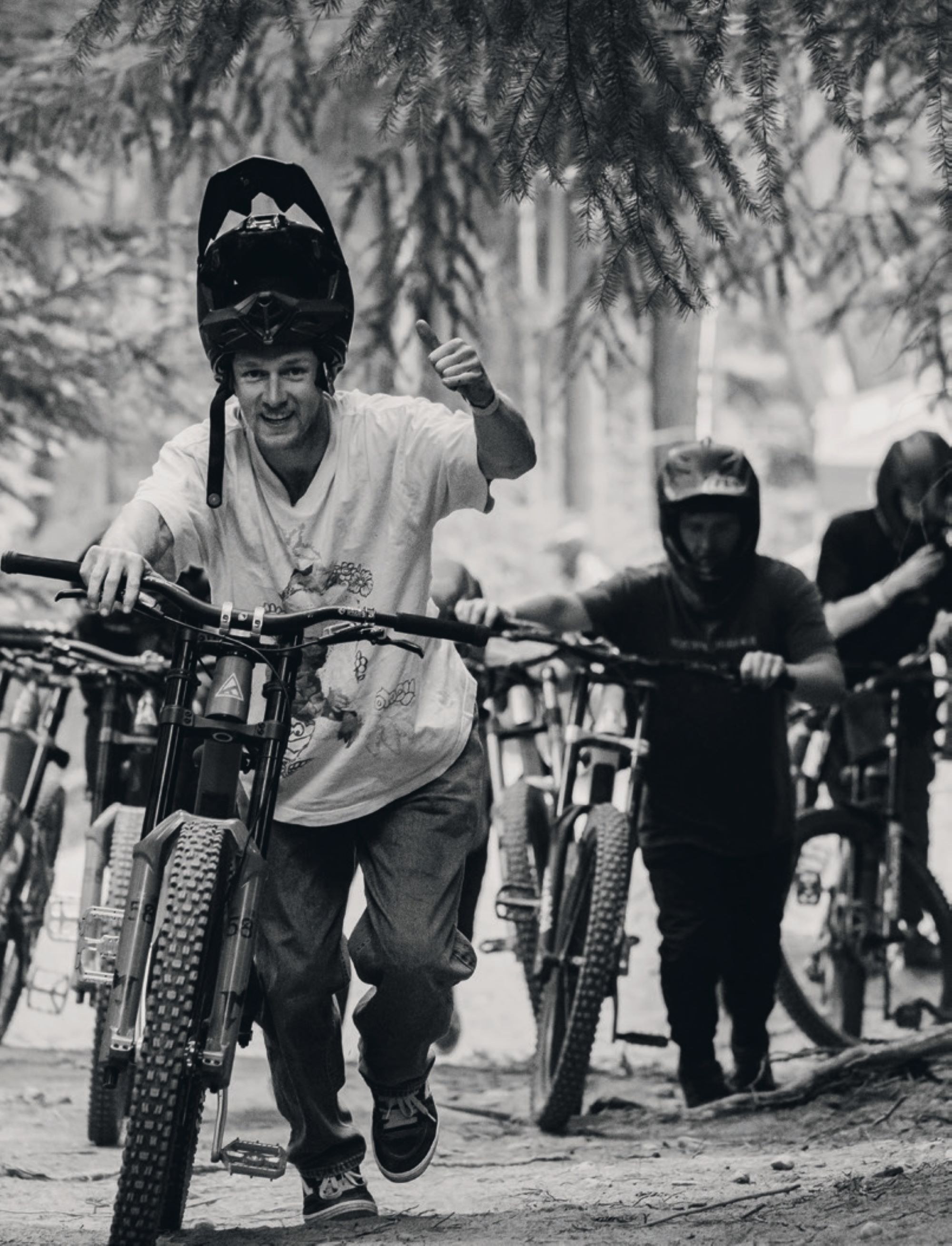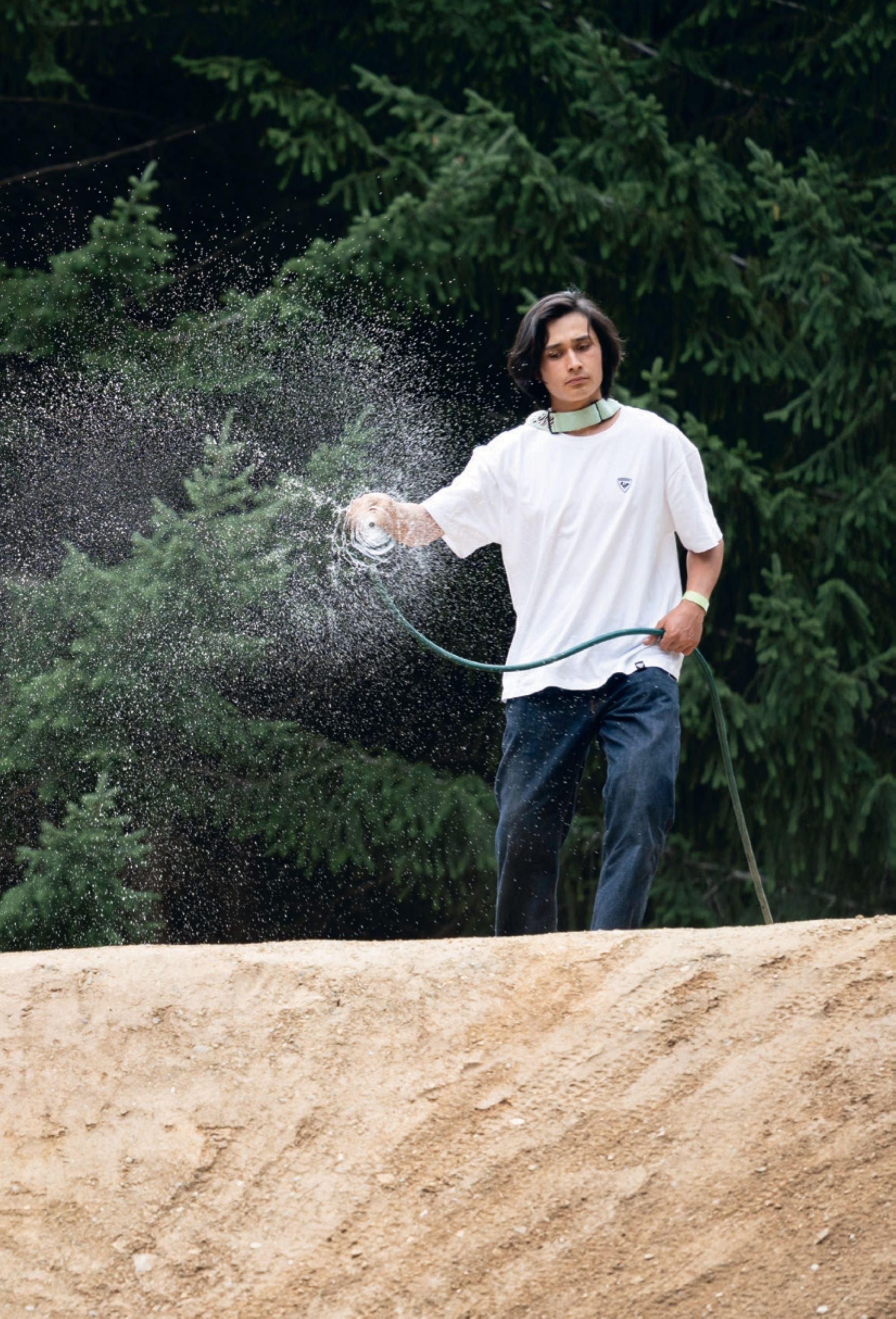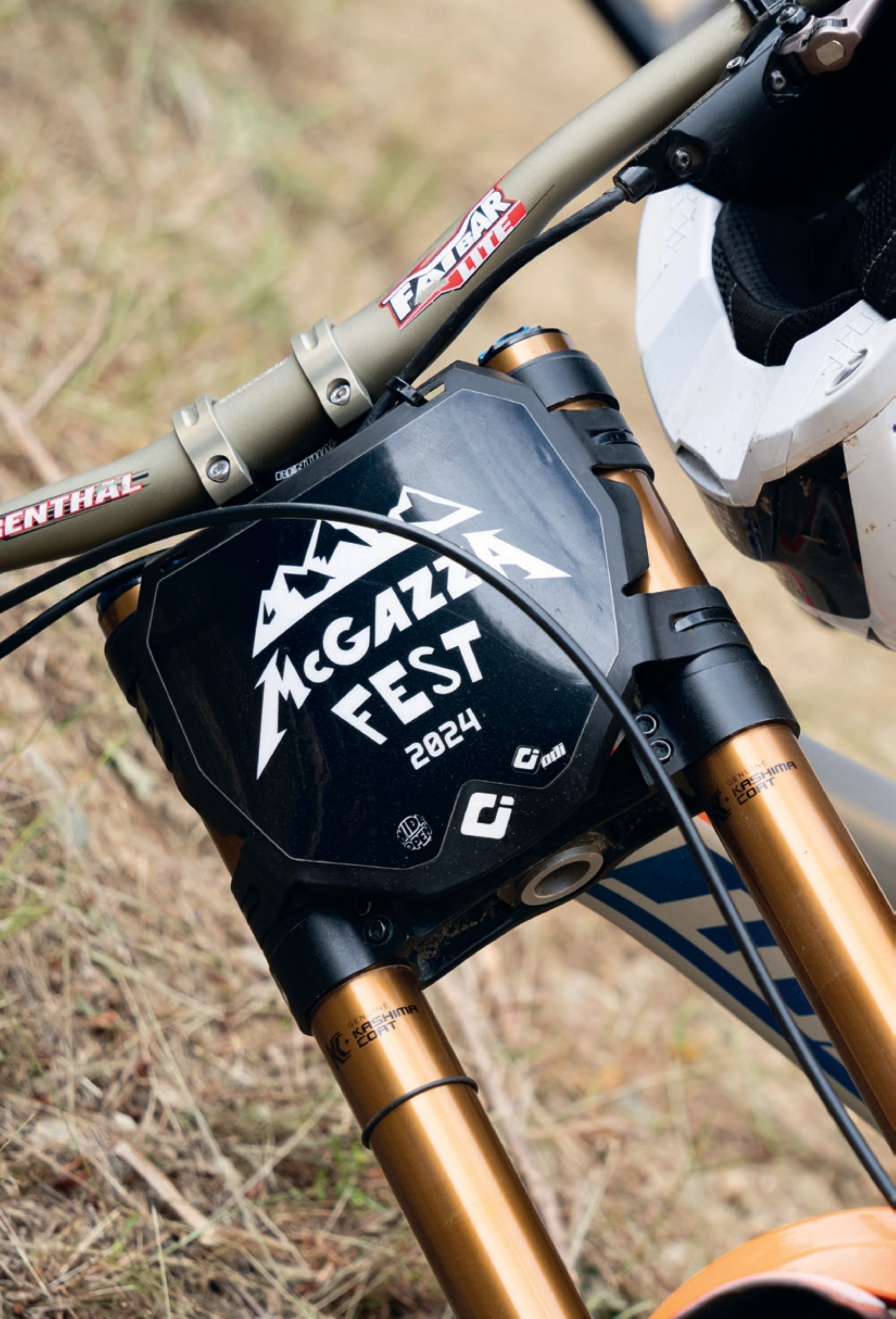Words by Riley McLay
Images by Riley McLay & Greig Howell
In the world of big air, nowhere is more iconic than Dream Track. Nestled in the heart of the Wynyard Jump Park, the crown jewel of Queenstown’s ever-growing trail network has drawn riders from around the world to experience the massive airtime it’s become synonymous with.
The ‘world’s largest public jumps’ are instantly recognisable by their meticulously shaped lips and perfectly calculated flow. Featured in countless films, edits, and reels, this line has seen many of the sport’s top riders leave their mark, each bringing a unique style and interpretation to how the jumps can be ridden.
But Dream Track is more than an arena to showcase skill—it’s a meeting place for the Queenstown mountain biking community. An open, inclusive space where riders come to learn, share and progress together. And, like Rome, it wasn’t all built in a day. Dream Track is the product of years of evolution, fine-tuning, and relentless community passion, shaping it into what it is today.
Some people might not know that the line was originally built for a segment in the cult classic film New World Disorder 5, where Dave Watson and Grant Allen ticked off a number of freeride zones during a New Zealand and Australia tour. The line was constructed in 2005, along the remnants of an old access road to a former forestry block. It consisted of four main hits, finishing with a massive road gap step-down that landed in what was the early iteration of the Mini Dream area. This was a time well before resource consents were needed for trail building and definitely before anyone was worried about health and safety. Thankfully, the Queenstown Mountain Bike Club (QMTBC) had a solid relationship with the local Queenstown Lakes District Council (QLDC), which gave construction the green light. The mastermind behind the build was Nathan Greenwood, who did most of the digger work himself. For its time, the build was impressive, even if it was a world away from today’s standards.
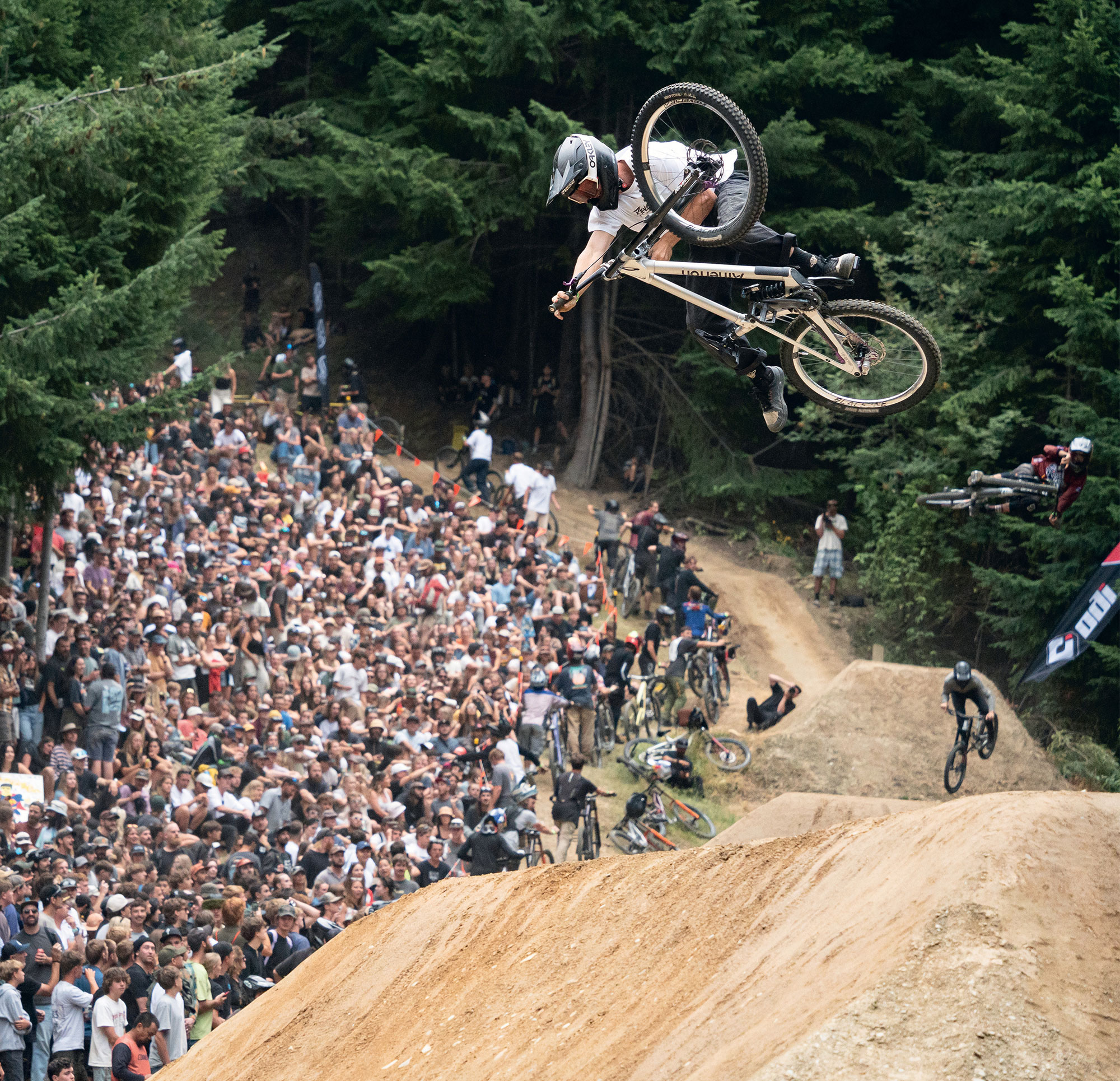
Once the film crew had moved on, only a small group of locals had the skillset to ride the jumps. Keen to keep developing the line, the club struggled to justify funding a track that only around ten people were using. So, most of the changes that followed were small tweaks, made primarily to suit those few regular riders. One of the most notable of those riders being New Zealand Freeride legend, Kelly McGarry, who made the move specifically to Queenstown to ride and train on the jumps. Knowing how much it would mean for the growth of the local scene, a plan was set in motion in 2014 to extend and improve the line. Spearheaded by Emmerson Wilken and Conor Macfarlane, the duo managed to convince QMTBC to allocate a budget for the work. A nine metre left hip into a 10-metre step- up was added, linking back into the four original jumps. This ‘new school’ layout opened the line to a wider range of riders, better suiting the bikes of the time and making it far easier to session.
With the lines growing popularity, they knew they were only scratching the surface of the area’s potential. Inspired by the impact of events like the Fest Series, and the possibility of hosting something of that caliber in Queenstown, they knew they needed to build more jumps and bring the rest up to modern standards. The goal was to build steeper jumps—more like BMX or 26-inch dirt jumps, just scaled up for downhill bikes. The vision was to hit a wall of dirt at high speed and launch to the moon! However, gaining support outside the club was difficult, as the local tourism board had yet to see biking as a worthwhile investment.
In 2016, after extensive consultation with the local scene on how best to utilise the terrain, a revised layout and cost estimate were presented to the QMTBC. A budget of $3,000 was allocated for the build, with most of it going toward diesel for a brand-new digger that was generously donated by local construction company, Veolia, for a two-month window. The rest of the effort and manpower would be entirely volunteered, with a long list of locals lining up to donate their time. The primary goal was to build three new jumps above the existing line, and if any budget remained, work would continue on the lower section of Dream Track. The two-month window to complete the build happened to align with the very first McGazza Festival—an event created to celebrate the life and legacy of Kelly McGarry. As part of the festival, a memorial jam was planned to officially open the newly revamped Dream Track, making the build feel even more meaningful for everyone involved. After over 250 hours of digger time and countless hours of volunteer work, the jumps were nearly finished and just needed the final test before they were good to go. Normally, guinea pig duties would fall to Kelly or Conor. But with Conor out, recovering from an injury, the job landed on Emmerson. Would the ol’ eyedometer prove accurate? The build wasn’t based on any exact science, just past experience. The only way to know for sure was to huck it. To their surprise, the jumps worked perfectly on the first try, and only minor tweaks were needed before the jam.
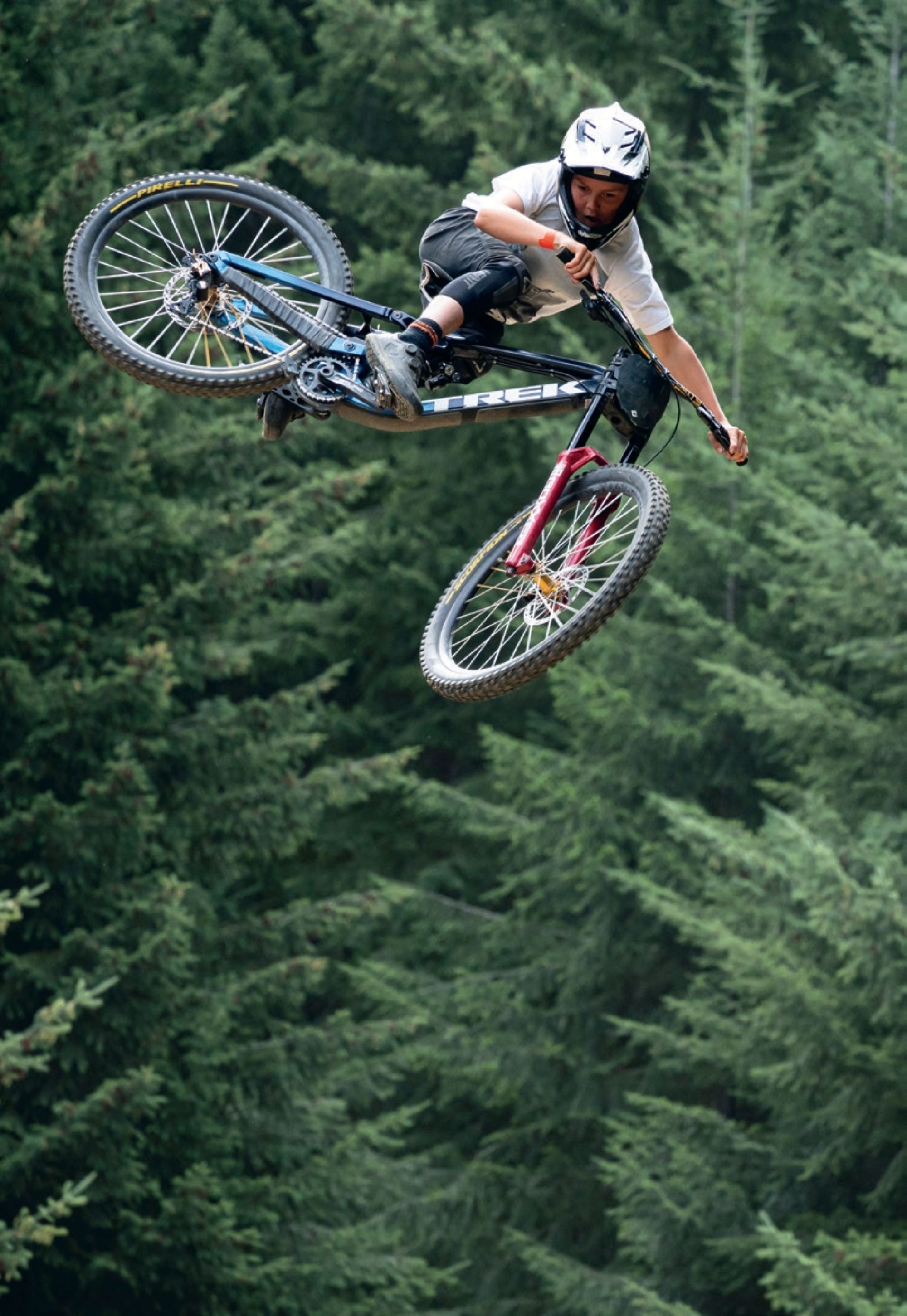
The first iteration of the McGazza Fest Dream Jam was as grassroots as it gets, just a crew of Kelly’s friends sending it huge for the big man. Since then, it’s grown into one of the most anticipated events on the mountain biking calendar – all on the back of no marketing or advertising for the event. One social media post goes out for the date of the event, and word of mouth does the rest. A major drawcard for spectators is not just the chance to watch a mix of star-studded pro riders’ session the jumps, but also the opportunity to see their local mates sending it alongside them. The club uses the event as a fundraiser, with proceeds coming from a sausage sizzle, a raffle, rider entry fees, and merch sales — including the popular McGazza tees. At the 2025 event, over 3,000 people packed the hillside to catch a glimpse of the action. It’s also become competitive to secure a spot in the lineup, with organisers capping the number of riders to 100 on a first-in, first-served basis to help manage congestion on course. This past year’s event introduced an under-19s category to open for the main show, giving talented up-and-coming groms a chance to showcase the future of the sport. Even though these young riders would be too young to know Kelly, and maybe not able to fully grasp what he accomplished, it’s inspiring to see them carrying on the culture that Kelly embodied. This upcoming event will mark 10 years of McGazza Fest, and organisers are planning to go all out for the occasion. There’ll be an even greater focus on Kelly’s memorial and legacy, along with the return of crowd favourites, like the live band — all to make it the best event yet!
Following the post-COVID boom in mountain biking, the local government has pushed to further develop Queenstown’s riding infrastructure, recognising the economic benefits the sport brings to the region. This includes attracting large-scale events like Natural Selection Bike, which even used Dream Track for its pre-qualifying round, to maintain the marketing momentum and reinforce the global push to position Queenstown as one of the world’s mountain biking meccas. Many come to ride the iconic Dream Track, but the nearby Mini Dream area and wider riding network has also become popular for riders to progress their skills and work up to the larger jumps. The club’s ‘build it and they will come’ mindset has paid off—helping foster a community that’s eager to push their limits, while minimising risk through higher-quality trail options. However, upkeep and maintenance of the Dream Track area still rely heavily on a small crew of dedicated volunteers, who are left to manage the consequences of this increased traffic. As a result, there’s been a strong emphasis on education and signage to encourage riders to use the hill’s irrigation system and water the jumps before riding.
There’s also been a push to riders to not take the jumps for granted and to only ride them when they feel ready. This follows an uptick in emergency callouts across the Queenstown network. With vehicle access to Dream Track and the greater Ben Lomond area difficult at the best of times, injured riders often have to be airlifted out by helicopter. The QMTBC and QLDC are acutely aware that pushing one’s limits can lead to real-world consequences, and have committed to supporting Dream Track while doing their best to ensure it is as safe as possible. Their goal is to ensure the track thrives for generations to come. This includes future-proofing the hillside by chaining off and closing the tracks for winter to preserve the jumps and prevent inexperienced riders from riding them in poor conditions, and planting native trees alongside the jumps to replace the windbreak if the remaining pines from the original forestry block fall or are removed.
The full line currently stands with 14 features, with the biggest sending you 60 feet to the sweet spot. Spanning 570 metres, the line’s average speed is well over 50 km/h taking riders about a minute to ride top to bottom. Those involved are extremely proud of what they’ve achieved with Dream Track and admit the riding still hasn’t gotten stale. That said, there are always plans in the works to build on, with ideas to add a few new features—including a trickable step-down, a full right hip, and a spine—to really round out the line. The goal is to be the icing on the cake to what’s already one of the most complete jump lines out there. Like Rome’s Colosseum, Dream Track stands as both a monument to the riders who came before and to the community building for the future. It’s more than just lips and landings — it’s the heartbeat of Queenstown’s riding scene, proof that when a community dreams big, the world will show up to ride.
All proceeds from this project will be donated to the Queenstown Mountain Bike Club for the maintenance and upkeep of Dream Track for the 2025/2026 season.




